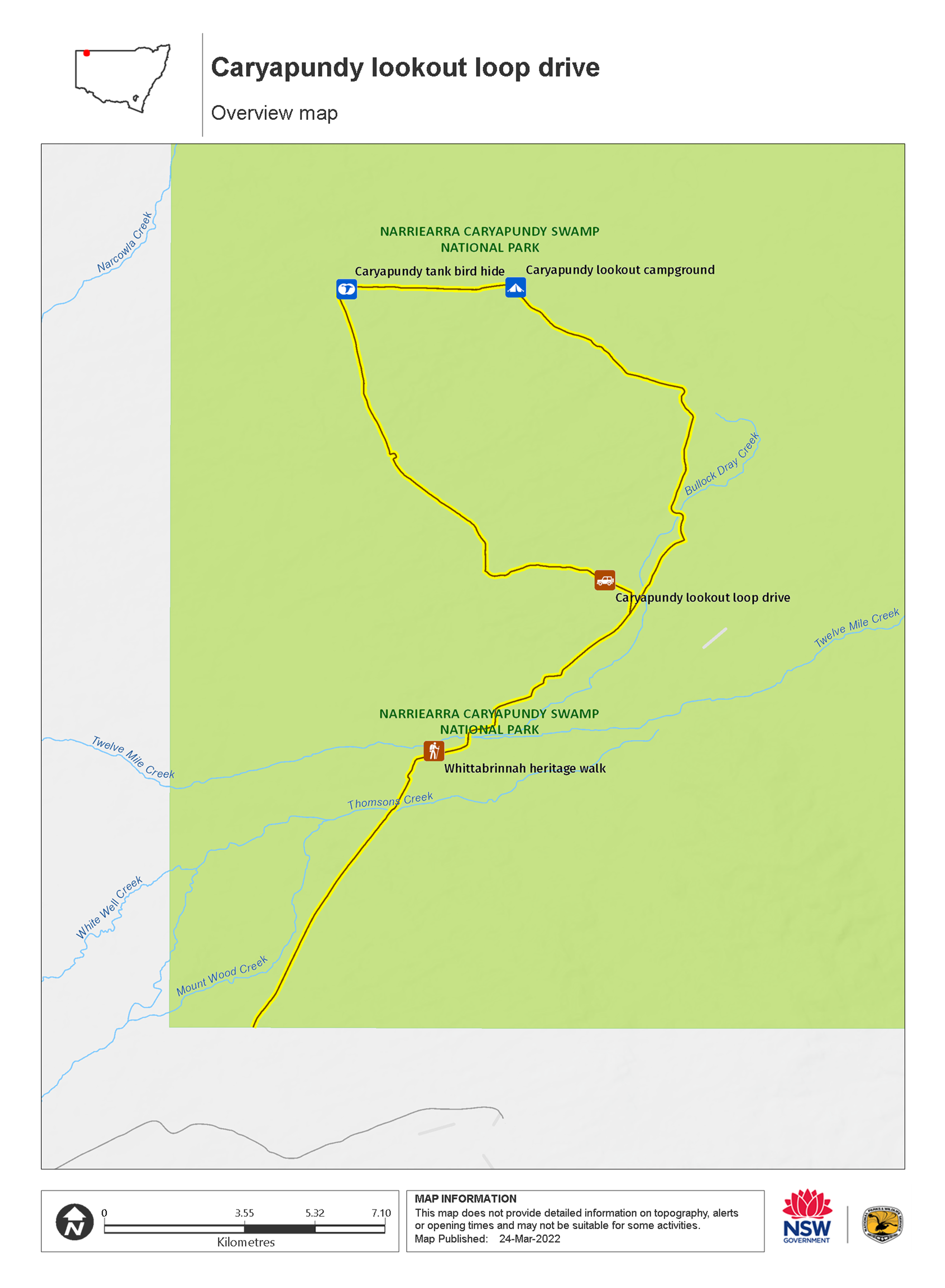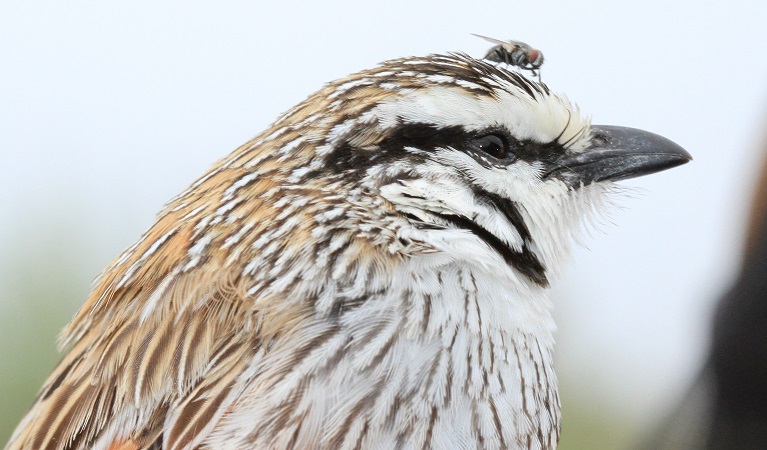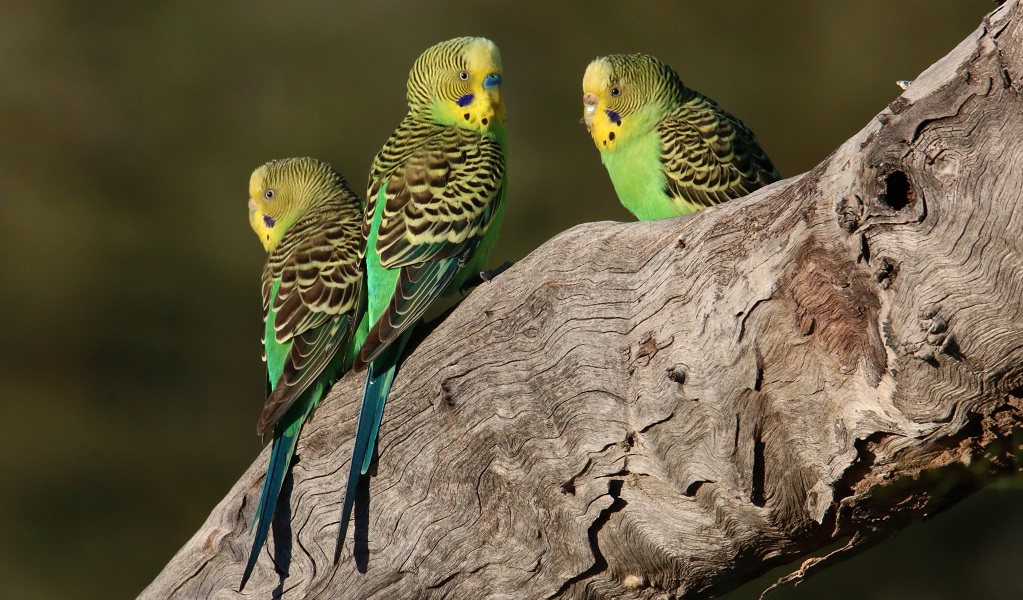Overview
If you’re staying in Tibooburra and only have time for a day drive, try this return drive through Narriearra. Bring a picnic and set out on your journey through this extraordinary outback national park.
- Accessibility
- Hard
- Distance
- 74km
- Time suggested
- 5hrs
- Grade
- Easy
- Entry fees
- Park entry fees apply
- What to
bring - Drinking water, food supplies, first aid kit, personal locator beacon, binoculars
- Please note
- The roads from Tibooburra or Bourke and the roads within this park are unsealed gravel roads that may be closed in poor weather. Check the weather before you set out.
- Please be mindful of wildlife. Stick to tracks to avoid trampling vegetation and look out for reptiles sunbathing in the middle of the road.
- The best times to visit are autumn for the cooler weather or springtime after rain, when the park comes alive with wildflowers like spotted fuchsia bush, Sturts pigface and variable daisy. Note that if you visit within 1 to 3 months after good rainfall, roads may only be open to 4WD vehicles, and some roads in the northern part of the park may not be open at all.
This 74km drive gives you an overview of Narriearra’s beauty and uniqueness. Along the way, the landscape stretches endlessly in all directions. Notice how the environment changes from semi-arid shrublands and sand dunes to the impermanent creeks, swamps and lakes of the Channel country after rain.
From the park entrance, follow Narriearra Scenic Drive. Continue straight then turn left onto Caryapundy lookout north loop to get to the Caryapundy tank precinct.
Book in advance to stay at Caryapundy lookout campground. It’s a great place to enjoy your picnic or a barbecue. Relax at one of the picnic tables along the edge of the escarpment and take in the view over Caryapundy Swamp from Caryapundy lookout. After lunch, go on a short walk.
Continue west and then stretch your legs at Caryapundy tank bird hide. See if you can spot any pink-eared ducks, grey teals, blue-billed ducks, hoary-headed grebes or Australasian grebes.
Back in the car, you'll need to return the same way, driving east along the Caryapundy lookout north loop. Turn right onto Narriearra Scenic Drive and return to the park entrance.
On the way
-

Caryapundy tank bird hide
If you’re a keen birdwatcher, don’t miss a visit to Caryapundy tank bird hide in Narriearra Caryapundy Swamp National Park, near Tibooburra. It’s a great place to see some amazing bird species.
-

Caryapundy lookout campground
If you enjoy remote, self-sufficient camping in outback NSW, Caryapundy lookout campground is for you. Located east of Tibooburra, it has an incredible view, picnic area and a night sky perfect for stargazing.
-

Whittabrinnah heritage walk
Step back in time when you do this short walk in Narriearra Carapundy Swamp National Park, near Tibooburra. It's an easy stroll around the Whittabrinnah Hotel ruins and great for all ages.
Map

Map legend

Local alerts
For the latest updates on fires, closures and other alerts in this area, see https://www.nationalparks.nsw.gov.au/things-to-do/driving-routes/caryapundy-lookout-loop-drive/local-alerts
General enquiries
- National Parks Contact Centre
- 7am to 7pm daily
- 1300 072 757 (13000 PARKS) for the cost of a local call within Australia excluding mobiles
- parks.info@environment.nsw.gov.au
Park info
- in Narriearra Caryapundy Swamp National Park in the Outback NSW region
- Narriearra Caryapundy Swamp National Park is always open but may have to close at times due to poor weather, road closures or fire danger.
Visitor info
All the practical information you need to know about Caryapundy lookout loop drive.
Getting there and parking
Caryapundy lookout loop drive begins at the entrance of Narriearra Caryapundy Swamp National Park. To get there from Tibooburra:
- Travel 26km east of Tibooburra along Tibooburra Road, to where it becomes Narriearra Road.
- Continue travelling straight onto Narriearra Road, and drive for another 19km. You'll pass through 2 gates to enter the park.
- Whittabrinnah Hotel precinct is the first area you’ll reach after entering the park. It's 10km into the park, past the second gate and park entrance sign.
Road quality
- Unsealed roads
Vehicle access
- 2WD vehicles
Weather restrictions
- 4WD required in wet weather
Parking
Parking is available at the Whittabrinnah Hotel precinct, Caryapundy tank precinct and Caryapundy lookout precinct.
Facilities
- There is no drinking water in this park. Bring plenty of water, petrol and supplies with you.
- The closest non-flush toilets, picnic tables and gas barbecues are located at Caryapundy lookout
- The closest carparks are located at Whittabrinnah Hotel precinct and Caryapundy lookout precinct
Maps and downloads
Accessibility
Disability access level - hard
- Whittabrinnah Hotel precinct: The walking track crosses an ephemeral creek where there is soft sand, steep edges and tree roots, rocks and other trip hazards.
- Caryapundy tank precinct: There’s a steep slope up to the bird hide with some obstacles such as loose rocks.
- Caryapundy lookout precinct: Wheelchair-accessible with assistance.;
Prohibited
Gathering firewood
Pets
Pets and domestic animals (other than certified assistance animals) are not permitted. Find out which regional parks allow dog walking and see the pets in parks policy for more information.
Smoking
NSW national parks are no smoking areas.
Learn more
Caryapundy lookout loop drive is in Narriearra Caryapundy Swamp National Park. Here are just some of the reasons why this park is special:
Home to over 500 species

Although at first glance the outback may look like a barren landscape, you’ll find that this isn’t the case in Narriearra Caryapundy Swamp National Park. Numerous endangered and threatened species live here, and some are found nowhere else in NSW. From the scurrying bearded dragon to a soaring wedge-tailed eagle, there are around 540 species recorded in the park (not including plant species). You may even be lucky enough to spot the endangered grey grasswren (pictured) flitting through the lignum surrounding Bartons tank bird hide.
- Caryapundy lookout loop drive If you’re staying in Tibooburra and only have time for a day drive, try this return drive through Narriearra. Bring a picnic and set out on your journey through this extraordinary outback national park.
- Caryapundy tank bird hide If you’re a keen birdwatcher, don’t miss a visit to Caryapundy tank bird hide in Narriearra Caryapundy Swamp National Park, near Tibooburra. It’s a great place to see some amazing bird species.
The drovers' hotel

Whittabrinnah Hotel was once a bustling place where drovers stopped by on their way through the Adelaide Gate to the markets at Broken Hill and Adelaide. The hotel stood for around 25 years until it burnt down in the early 1890s, and was never rebuilt. You can still see the remaining stone material from the hotel’s buildings, hearths and foundations, and the stockyard across the road. There’s also galvanised iron material amongst a scatter of glass bottles and ceramic jars from daily life at the hotel. The heritage values of these objects are defined by the connection they have with the Whittabrinnah Hotel, so please don’t remove them from this location.
- Caryapundy lookout loop drive If you’re staying in Tibooburra and only have time for a day drive, try this return drive through Narriearra. Bring a picnic and set out on your journey through this extraordinary outback national park.
- Whittabrinnah heritage walk Step back in time when you do this short walk in Narriearra Carapundy Swamp National Park, near Tibooburra. It's an easy stroll around the Whittabrinnah Hotel ruins and great for all ages.
Plants and animals protected in this park
Animals
-

Grey grasswren (Amytornis barbatus barbatus)
The endangered grey grasswren (Bulloo subspecies) lives in the semi-arid floodplains of far western NSW and Queensland. Around 90 percent of this rare bird's NSW habitat is protected within Narriearra Caryapundy Swamp National Park.
-

Australian pelican (Pelecanus conspicillatus)
The curious pelican is Australia’s largest flying bird and has the longest bill of any bird in the world. These Australian birds are found throughout Australian waterways and the pelican uses its throat pouch to trawl for fish. Pelicans breed all year round, congregating in large colonies on secluded beaches and islands.
-

Emu (Dromaius novaehollandiae)
The largest of Australian birds, the emu stands up to 2m high and is the second largest bird in the world, after the ostrich. Emus live in pairs or family groups. The male emu incubates and rears the young, which will stay with the adult emus for up to 2 years.
-

Red kangaroo (Macropus rufus)
The red kangaroo is one of the most iconic Australian animals and the largest marsupial in the world. Large males have reddish fur and can reach a height of 2m, while females are considerably smaller and have blue-grey fur. Red kangaroos are herbivores and mainly eat grass.
-

Short-beaked echidna (Tachyglossus aculeatus)
One of only 2 egg-laying mammals in the world, the short-beaked echidna is one of the most widespread of Australian native animals. Covered in spines, or quills, they’re equipped with a keen sense of smell and a tube-like snout which they use to break apart termite mounds in search of ants.
-

Wedge-tailed eagle (Aquila audax)
With a wingspan of up to 2.5m, the wedge-tailed eagle is Australia’s largest bird of prey. These Australian animals are found in woodlands across NSW, and have the ability to soar to heights of over 2km. If you’re bird watching, look out for the distinctive diamond-shaped tail of the eagle.
Plants
-

Mulga (Acacia aneura)
Mulga are hardy Australian native plants found throughout inland Australia. With an unusually long tap root, the mulga is able to withstand long periods of drought.
-

River red gum (Eucalpytus camaldulensis)
Australian native plants, majestic river red gum trees are widespread across Australian inland river systems. The river red gum is a dominant tree species of the Murray-Darling basin which spans NSW, Queensland and Victoria. This iconic native eucalypt grows to a height of 30m and is thought to have a lifespan up to 500-1000 years.
-

Saltbush (Atriplex nummularia)
A hardy Australian native plant, the saltbush is a small spreading shrub that can withstand dry salty soils such as those found in the desert plains of western NSW. It is grey-white in colour and has small spear-shaped succulent leaves. It flowers from December to April.

